You have likely heard of acupuncture, the practice in which tiny needles are inserted strategically into the body to provide pain relief and relax tight muscles. In fact, many of you have likely experienced (or know someone who has experienced) the benefits that acupuncture can provide. Acupressure is a similar practice, but with some key differences. Acupressure is an age-old practice stemming from Traditional Chinese Medicine (TCM). With many similarities to acupuncture, acupressure is a much easier and less intrusive way to experience relief and relaxation. Instead of using needles, fingers and palms are used on the same points that acupuncture targets, but with firm pressure instead of a needle. People all over the world use acupressure for a variety of things: relief for tight muscles, pain relief, general relaxation, and so much more. There are countless accounts of people experiencing relief for TMJ, fevers, lack of sleep, and there is even practice in acupressure to stop coughing! In this article, we will be discussing the best acupressure points for cough. First, we are going to go over acupressure and how to find your acupressure points, as being well-educated is crucial to proper acupressure.
How Do I Find Acupoints?
Acupressure points, or acupoints, are fairly easy to find on the human body. According to TCM, all acupressure points lie along one of the 12 primary meridians that run along your body. Each meridian corresponds to a vital organ in the body (such as the stomach, the heart, the spleen, etc.) and is where “qi”, or energy, flows through the body. Acupoints are often found in little crooks or divots on the body: the temple, the crook of the elbow, and the back of the knee, to name a few examples. A group of acupressure points that lie on the same meridian will typically be in a line; for example, the lung meridian has acupoints that run along the arm and up to the shoulder.
You will typically be able to tell when you are engaging an acupressure point. Often you will feel a release and sometimes mild discomfort. The amount of pressure you apply to the acupoint and how long you maintain the pressure/massage will vary depending on the point and the person. Most acupoints will require firm pressure for several minutes. Most acupressure points also work best under stagnant pressure instead of massaging or moving around. People will react to the engagement of acupressure points very differently; it is important to keep this in mind when practicing acupressure on yourself or someone else. In addition, if the skin becomes tender, a lotion of oil can be used when applying pressure on any acupressure point, just like when giving or receiving a massage.
Keeping these tips and facts about acupressure in mind, it’s time to jump into the top acupressure points for cough. If you have a persistent cough, want relief from your cough, or are experiencing discomfort within your chest, follow the instructions for the following pressure points to stop coughing.
Acupressure Points For Cough
As we mentioned before, acupressure can greatly help a variety of ailments and conditions, a cough being one of them. The pressure points to stop coughing that we discuss below can work regardless of the origin of your cough (including long-term/chronic coughs) and can give some relief to the person coughing. As discussed further below, these pressure points for cough can also provide relief for a variety of other ailments.
Acupoint: LU-6 (Other Names: Lung-6/Kong Zui/Maximum Opening)
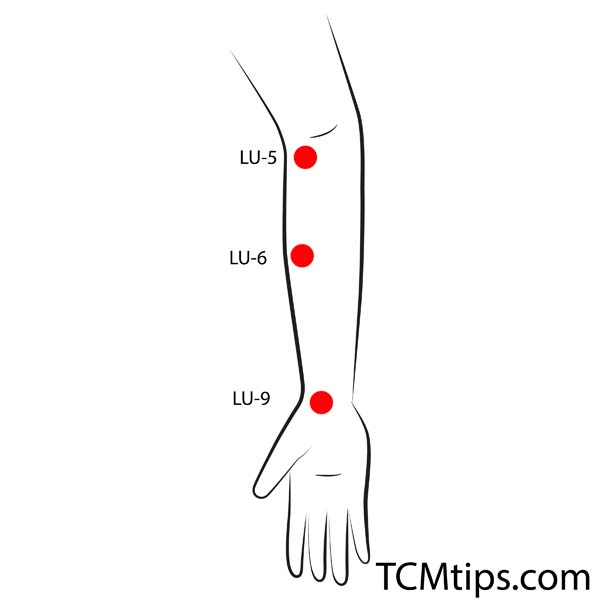
The “Maximum Opening Hole” acupressure point is crucial to our list of acupressure points to stop coughing. This point is located on the lung meridian; as mentioned above, this meridian runs along the arm. Luckily, the pressure points along the lung meridian are considered fairly easy to find so even if you are a beginner at acupressure, you should be able to easily engage this point. The LU-6 point specifically is located on the inner part of the forearm, about halfway between the wrist crease and elbow crease (see the photo above for a better and more accurate representation). It is located about 3 cun below LU-5 (LU-5 is found on the elbow crease, around one inch lateral to the biceps tendon, in the depression of the elbow itself).

Place firm pressure on this acupoint and breathe out at the same time for about 10 seconds. Repeat this 5 times.
This point does a great job of releasing heat congestion from the body and helps with a variety of ailments within the chest. This heat release is what causes the alleviation of your cough. You can also experience other benefits, such as relief from a nosebleed and sore throat. If you suffer from asthma, this pressure point can also help. Acupuncture therapist, Ms. Mai Sogawa adds that it also helps relieve breathing difficulties. However, it is important to note no acupressure point should replace the use of an inhaler. Unlike LU-1, which will be discussed later, this point is not good for a wet cough, or one that contains phlegm. The best results will be seen if this point is engaged when suffering from a dry cough.
In addition to being one of the crucial acupressure points for cough relief, the LU-6 acupoint can result in other benefits, such as relief from pain in the forearm, relief from pain in the foot, and more. The incredible thing about acupressure points and the fact they run along meridians is they can have beneficial effects all over the body. LU-6 is also one of the acupuncture points for the tennis elbow.
Acupoint: LU-1 (Other Names: Lung-1/Zhong Fu/Middle Palace)
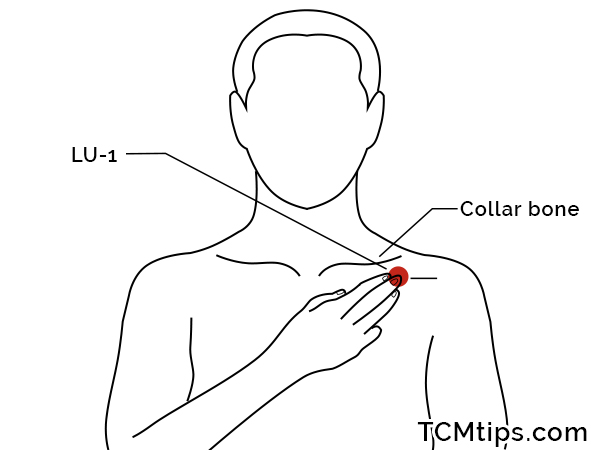
The “Middle Palace” point, also located on the lung meridian, is crucial to our list of acupressure points for cough. Like the “Maximum Opening Hole”, LU-1 can release heat from the body resulting in great relief and benefits. This point is located higher up on the body compared to LU-6; it is on the upper lateral chest, located about 8 fingers from the middle chest line and about 3 fingers down from the clavicle. An easier method to locate this acupoint is to place your fingers across your chest and press on the hole below your collarbone. Your middle finger will be pointing directly at the acupoint LU-1. Refer to the image above for a more accurate view of this cough pressure point.
This acupoint has many of the same benefits as the LU-6 pressure point. According to Ms. Mai Sogawa, engaging in this point will result in relief from coughing, asthma, wheezing, and other conditions associated with the chest (such as chest pain) and/or lungs. Some patients have even experienced relief from phlegm build-up and vomiting, as this acupoint is most beneficial for those suffering from a “wet” cough as opposed to a “dry” cough.
You can press this acupoint with a small circular motion and breathe out at the same time for about 10 seconds. Repeat this 5 times.
Other than relief from chest-related ailments, there are reports of relief from back and shoulder pain after engaging in this acupressure point. Some people with stomach and digestion pain/issues have even experienced relief after applying pressure to this point. This is yet another example of how acupressure points can provide relief throughout the entire body due to lying on meridians in which energy flows throughout the body. In addition to the physical relief, there have been many reports of emotional and spiritual effects; many people have been alleviated from grief and anxiety from this acupoint, making it a holistic addition to the list of acupressure points for cough.
Acupoint: Ren-22 (Other Names: The Conception Vessel-22/Tian Tu/Heaven Projection)
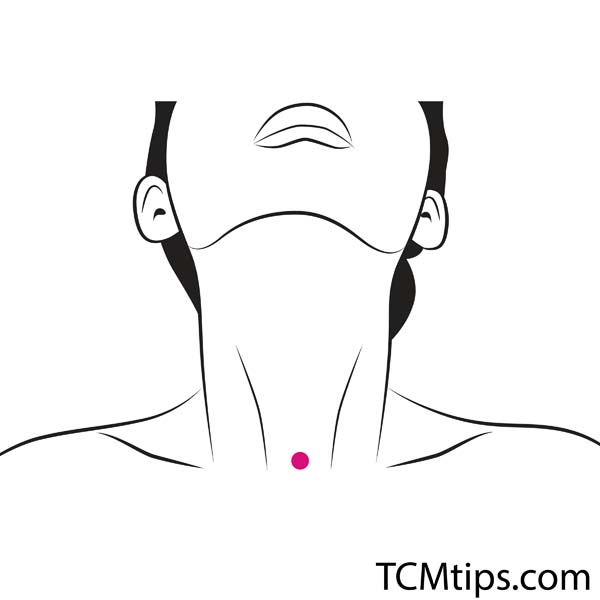
Another acupuncture point to relieve cough and make you sleep easier that you don’t want miss out on is Ren-22. This pressure point is located at the end of the neck, in the depression between the meeting point of the two collar bones called the suprasternal fossa.
Ren-22 helps to subdue rebellious Qi, benefits the throat, stops cough, and resolves phlegm. Ms. Mai Sogawa comments that it is a well-known point for relieving coughs. It is also effective for asthma and sore throat.
Acupoint: Ren-17 (Other Names: The Conception Vessel-17/Shan Zhong/Middle of the Chest)
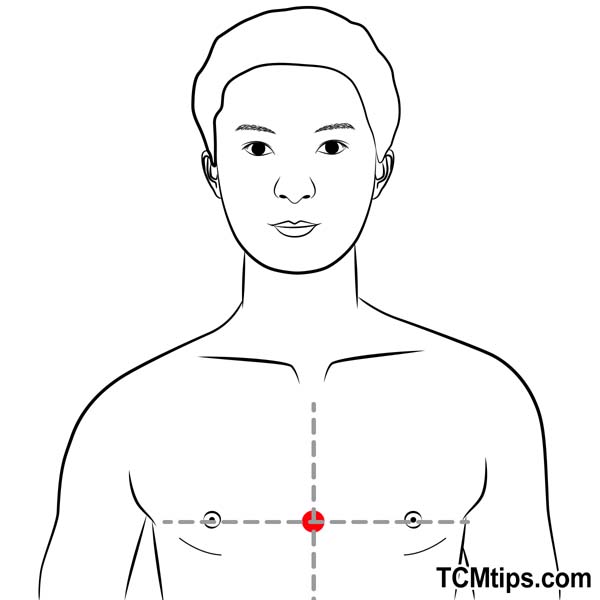
You shouldn’t also do without Ren-17 when you have a cough and can’t sleep well. This acupuncture point is located on the midline of the chest, mid-distance between the two nipples, on the same level as the fourth intercostal space.
Stimulating this acupuncture point helps to open up the chest, help the breasts, and subdue rebellious Qi. Ms. Mai Sogawa holds that Ren-17 is effective in relieving asthma, hiccups, and anxiety.
Acupoint: LU-5 (Other Names: Lung-5/Chi Ze/Cubit Marsh)
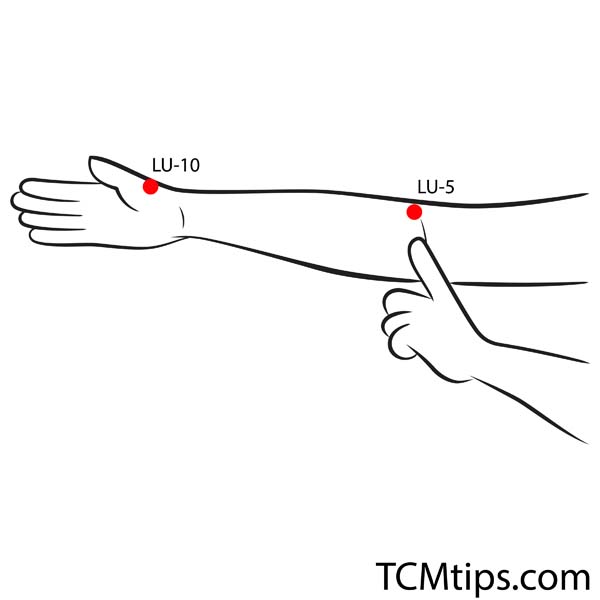
Lung 5 is a pretty notable acupuncture point that is effective in treating a variety of health issues. It is no surprise that it is also effective in relieving cough to put you in a smoother sleep. This acupressure point for cough is located on the elbow crease, on the inner side of the tendon called tendon m. biceps brachii.
LU-5’s function in TCM is to remove lung heat and trickle down lung Qi, expel lung phlegm, and relax the sinews. According to Ms. Mai Sogawa, LU-5 is a pressure point with the role of cooling the heat of the lungs. Clinically, it is used in the treatment of acute abdominal pain coupled with vomiting and diarrhea, sore throat, and chest congestion.
Acupoint: LU-7 (Other Names: Lung-7/Lie Que/Broken Sequence)
Acupoint: KD-6 (Other Names: Kidney-6/Zhao Hai/Shining Sea)
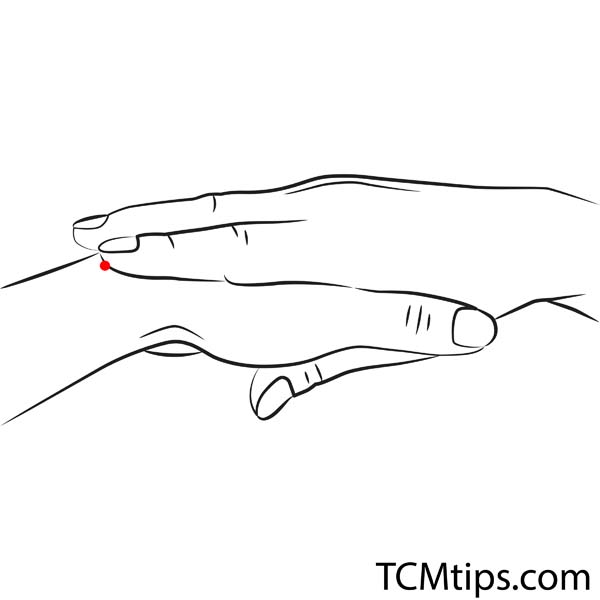
Lu-7 and KD-6 are the next pair, pushed together, that will help you relieve cough. LU-7 is located on the forearm, some distance before the wrist. The best way to locate it is to link the webs of your thumb and forefinger together. The point on the forearm where the tip of the forefinger touches is LU-7.
On the other hand, KD-6 is located on the feet, in the depression below the tip of the inner ankle.
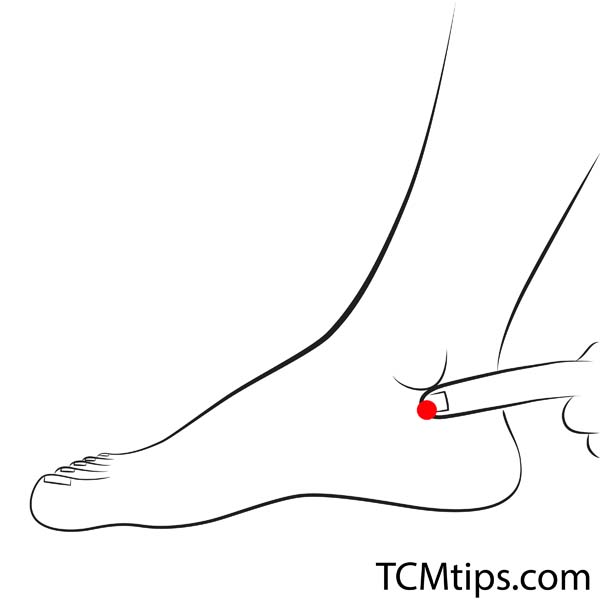
While LU-7 helps to release exterior wind and trickle down the lung Qi, KD-6 assists to nourish the kidney and clearing deficiency heat. Ms. Mai Sogawa suggests pressing these two pressure points together to circulate Qi. According to the acupuncture therapist, using the lung meridian and kidney meridian acupuncture points as a set is effective in circulating the meridians and improving coughing.
Summary
The lungs are responsible for inhaling clean air and expelling turbid air. When the lungs weaken, the power to raise Qi is lost, and heat accumulates above. It manifests itself in a variety of discomforts, such as coughing, headaches, and dizziness. You can improve symptoms even a little by pressing pressure points around the throat that effectively lower fever.

Try our Anti-Aging Gua Sha Tool designed to bring out your skin’s natural glow.
Best Gua Sha Product- Anti-Aging: The tool is designed to target 11 specific aging signs such as wrinkles and sagging skin. By following the 7-step routine, users can improve skin firmness and reduce fine lines naturally.
- Enhances Skincare Routine: It works effectively with serums and lotions, boosting absorption and efficacy of skincare products.
- Visible Skin Improvement: Users can expect a smoother complexion, reduced puffiness, and a more youthful appearance.
 P. Sze
P. Sze 

















